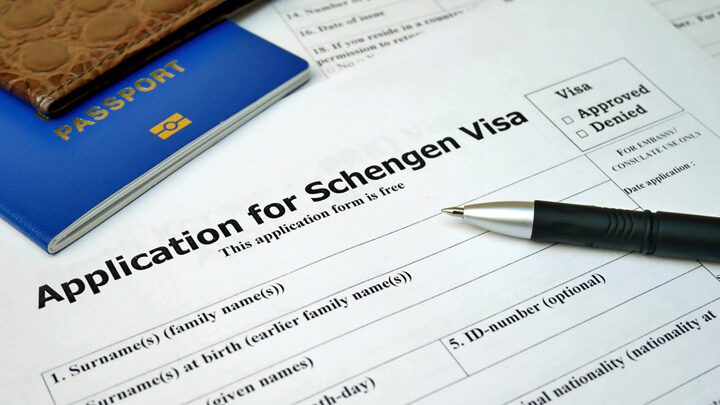
Dear Editor/Rob V.,
I've studied Rob V.'s Schengen file, but I can't quite figure it out. A visa is an entry visa, not a residence permit. The file also describes that upon entering the Schengen area, the traveler must have a valid visa. This would mean that the traveler no longer needs a valid visa for a stay in the Schengen area; a bit like how it works in Thailand. There, a 6-month visa can lead to a stay of almost 9 months.
However, I also gather from the Schengen file that the stay must take place within the validity period of the visa. If a visa gives a right of entry, where does it say that the period of stay must not exceed the validity of the visa?
Regards,
Beanrawd
Dear Boonrawd,
First of all, it is better not to make comparisons between how the European (Schengen) and Thai visa rules. For example, a border run is possible in Thailand, something that is not possible under European rules. In Europe, the reasoning is that a visa is for short stay, and a residence permit is for long stay. For Schengen, 'short stay' is a maximum of 3 months (90 days to be exact). For longer stays, one must immigrate and apply for a residence permit from the European Member State in question.
It is also important to know the difference between days of stay (number of days someone is allowed to stay) and validity period (the date on which the visa sticker expires). For example, a Multi-Entry Visa (MEV) can be issued that is valid for 5 years. But the general rules still state that a person can only stay for a maximum of 90 days (in any 180-day period: 90 inside is also XNUMX days outside).
Also realize that a visa never entitles you to entry. With a valid visa you should be able to come to the border, so an airline should 'take' you with you, but if the border guard at the border determines that you do not meet all the requirements, you will not enter Europe (although you can You can of course call in a lawyer and try to put things right on the spot instead of voluntarily turning around).
If you look at the Schengen Visa Code, you can read, among other things, and in particular paragraph 1 of article 1:
—
Article
Objective and scope
1. This Regulation lays down the procedures and conditions for issuing visas for transit through the territory of the Member States or an intended stay in the territory of the Member States not exceeding three months in any six-month period.
(..)
Article
Evidence
1. Applicants for a uniform visa shall be required to provide: (…)
d) information that allows an assessment of the applicant's intention to leave the territory of the Member States before the expiry of the visa applied for.
(...)
Article
Control of entry conditions and risk assessment
1. When examining applications for a uniform visa, the applicant's compliance with the entry conditions set out in Article 5(1)(a), (c), (d) and (e) of the Schengen Borders Code shall be verified and particular attention shall be paid given to the assessment of whether the applicant represents a risk of illegal immigration or a risk to the security of the Member States, and in particular whether the applicant intends to leave the territory of the Member States before the validity period of the visa applied for expires.
(...)
ANNEX VII
COMPLETING THE VISA STICKER
(...)
4. Section 'DURATION OF STAY … DAYS'
This section indicates the number of days during which the visa holder is entitled to stay in the territory for which the visa is valid, either during an uninterrupted period or, depending on the number of days allowed, during several periods of stay, between the dates mentioned under section 2, insofar as the number of entries stated in section 3 is not exceeded.
In the free space between the words 'DURATION OF STAY' and the word 'DAYS' the number of days of stay to which the visa entitles is entered is entered with two digits, the first of which is zero if the number of days is a single digit.
In this section, this may be a maximum of 90 days.
When a visa is valid for more than six months, the length of each stay is 90 days within any six-month period.
(...)
—
In addition, the Schengen Borders Code states:
—
Article
Conditions of entry for third country nationals
1. For an intended stay in the territory of the Member States not exceeding 90 days in any 180-day period, taking into account the previous 180 days for each day of stay, third-country nationals shall be subject to the following entry conditions: (…)
(b) if required by Council Regulation (EC) No 539/2001 (25), hold a valid visa, unless they hold a valid residence permit or long-stay visa ;
(...)
—
In short: a person with a visa must have a valid visa on every day that he/she is in the Schengen area. This means that both the number of days allowed (see the field 'days' on the visa, max 90 in any period of 180 days) and the period of validity (see the fields 'valid from .. to ...' on the visa).
I hope it's that clear.
Regards,
Rob V
Sources:
- eur-lex.europa.eu/legal-content/EN/TXT/HTML/?uri=CELEX:32009R0810&from=EN
- eur-lex.europa.eu/legal-content/EN/TXT/HTML/?uri=CELEX:32016R0399&from=EN

